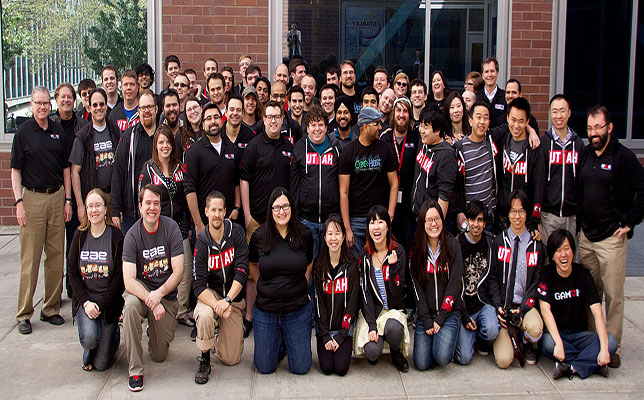U of Utah Offers Unity Certification to Game Design Students

Source: University of Utah.
The University of Utah has teamed up with a San Francisco-based game development company to bring students in its Entertainment Arts & Engineering (EAE) program the chance to become certified on a popular platform. The university partnered with Unity Technologies, enabling EAE students to become a Unity Certified Developer, free of charge.
The Unity Certified Developer program is designed to “give developers the opportunity to validate their design and programming skills and demonstrate foundational proficiency in the industry’s leading platform for game development,” according to a news release. The program's courseware includes 20 chapters of content, comprised of 199 videos and 3D project exercises, that prepare students for the Unity Certified Developer Exam. Upon completing the exam, students will receive an e-certificate that is valid for two years, an exam scorecard and a Unity identification number. Unity’s courseware varies in price and can cost up to $250, but the partnership enables EAE senior undergraduates and graduates to take the course and exam for free.
The EAE program was named the No. 1 undergraduate school and No. 3 graduate school for studying game design program by the Princeton Review. Alumni have gone on to work for big-name game developers like Blizzard Entertainment, Electronic Arts and Ubisoft.
“A dedication to academic excellence is our top priority, and we take every measure to ensure that our students are well prepared for their careers in the competitive fields of game design and development,” said Robert Kessler, director of the EAE program, in a statement. “The Unity Certification Exam is one more way we can help our distinguished alumni stand apart from the crowd with marketable skills and a strong foundation.”
More than 5.5 million developers use the Unity platform to create 2D, 3D, augmented reality and virtual reality games. The platform has been used to develop popular games like Angry Birds 2 and Galak-Z. Unity launched its education offerings earlier this summer, and already more than 10 higher education institutions have signed up. U of Utah is the first to offer the Unity Certified Developer program to its students for free.
To learn more about the Unity Certified Developer program, visit the Unity site.
About the Author
Sri Ravipati is Web producer for THE Journal and Campus Technology. She can be reached at [email protected].